
Gojong, personal name Yi Myŏngbok, later Yi Hui, also known as the Gwangmu Emperor, was the penultimate Korean monarch. He ruled Korea for 43 years, from 1864 to 1907, first as the last king of Joseon, and then as the first emperor of the Korean Empire from 1897 until his forced abdication in 1907. His wife, Queen Min, played an active role in politics until her assassination.
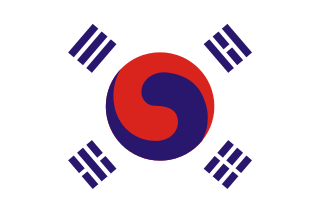
The Korean Empire, officially the Empire of Korea or Imperial Korea, was a Korean monarchical state proclaimed in October 1897 by King Gojong of the Joseon dynasty. The empire stood until Japan's annexation of Korea in August 1910.
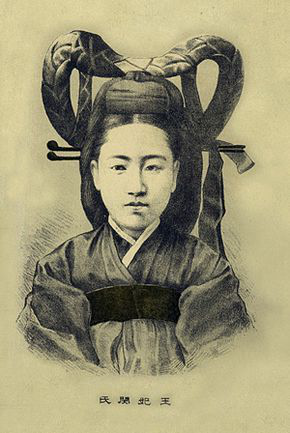
Empress Myeongseong was the official wife of Gojong, the 26th king of Joseon and the first emperor of the Korean Empire. During her lifetime, she was known by the name Queen Min. After the founding of the Korean Empire, she was posthumously given the title of Myeongseong, the Great Empress.
Yi Seok is a South Korean entrepreneur. He is a member of the House of Yi, the royal house of Joseon and Korean Empire. He is the 10th son of Prince Yi Kang, the fifth son of Emperor Gojong, and one of his consorts, Lady Hong Chŏng-sun.

Yi Kang, Prince Imperial Ui, also known as Prince Uihwa, was the second son of Emperor Gojong of Korea and his concubine, Lady Jang, who was a court lady-in-waiting.
Yi Cheong is a member of the former Imperial Family of Korea and was a Korean-Japanese noble during Korea under Japanese rule in 1945–1947. He is a great-great-grandson of Heungseon Daewongun and the eldest son of Yi U and Park Chan-ju.
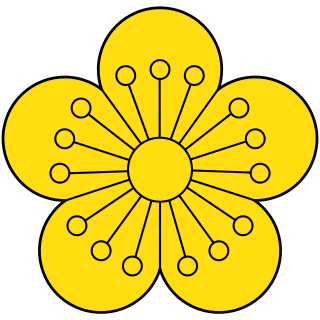
The House of Yi, also called the Yi dynasty, was the royal family of the Joseon dynasty and later the imperial family of the Korean Empire, descended from the Joseon founder Yi Seong-gye. All of his descendants are members of the Jeonju Yi clan.

The Japan–Korea Treaty of 1905, also known as the Eulsa Treaty, Eulsa Unwilling Treaty or Japan–Korea Protectorate Treaty, was made between the Empire of Japan and the Korean Empire in 1905. Negotiations were concluded on November 17, 1905. The treaty deprived Korea of its diplomatic sovereignty and made Korea a protectorate of Imperial Japan. It resulted from Imperial Japan's victory in the Russo-Japanese War in 1905.
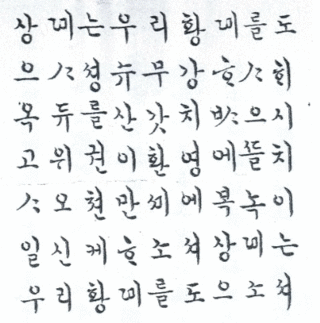
The "Patriotic Hymn of the Great Korean Empire" was the national anthem of the Korean Empire during the 1900s. It was the first and only national anthem of a unified Korean state to date.
The Japan–Korea Treaty of 1904 was made between representatives of the Empire of Japan and the Korean Empire in 1904. Negotiations were concluded on 23 February 1904. Though Korea declared neutral to Russo-Japanese War, Japanese troops entered Seoul on 9 February 1904, declared war to Russia and kidnapped some pro-Russia in Korea including Lee Yong-ik (이용익). The treaty was confirmed invalid in 1965 by Treaty on Basic Relations between Japan and the Republic of Korea

Lee Wan-yong, also spelled Yi Wan-yong or Ye Wan-yong, was a Korean politician who served as the 7th Prime Minister of Korea. He was pro-Japanese and is best remembered for signing the Japan–Korea Annexation Treaty, which placed Korea under Japanese rule in 1910.
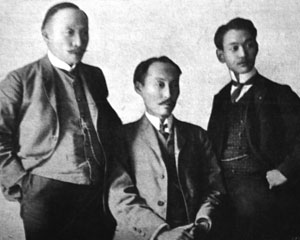
The Hague Secret Emissary Affair resulted from Emperor Gojong of the Korean Empire sending confidential emissaries to the Second Peace Conference at The Hague, the Netherlands, in 1907.

Seoul, the capital of South Korea, has been called by a number of formal and informal names over time.

Min Yeong-hwan was a politician, diplomat, and general of the Korean Empire and known as a conservative proponent for reform. He was born in Seoul into the powerful Yeoheung Min clan which Heungseon Daewongun hated, and committed suicide as an act of resistance against the Eulsa Treaty imposed by Japan on Korea. He is remembered today for his efforts on behalf of Korean independence in the waning days of the Joseon period and a statue to his memory now stands on a traffic island near Chungjeongno Intersection, his namesake, after having previously been located at Anguk Intersection in 1957, before being moved due to road widening to near Donhwa Gate of Changdeok Palace in 1970 where it was criticized for not matching the surroundings, and then near the General Post Office next to Jogye Temple in 2003, where it was reportedly neglected until 2022.
The Gwangmu Reform was a collection of reforms that were aimed at modernizing and westernizing the Korean Empire as it felt held back from what other countries had achieved in their own process of industrial revolutions. It takes its name from Gojong, also known as the Gwangmu Emperor. The reforms that took place during the Gwangmu Era from 1897 to 1907 showed, in the long term, Korean potential for starting and achieving modernisation. This sort of development was unseen until the Chang Myon-era of the 1960s and 1970s. The Gwangmu reform later staged the fundamental background for future Korean development in infrastructure, reforming the economy and creating the nucleus of the modern bureaucracy and military.

Yu Gil-chun was a Korean politician. Yu lived during the last few decades of Joseon and the Korean Empire, before the occupation of the peninsula by Japan. As a young man, he studied the Chinese classics. Unusually for the time, he came to embrace foreign ideas and literature.

The Imperial Korean Armed Forces (대한제국군) was the military of the Korean Empire.

Yi Yong-ik was an official, and politician of the Korean Empire. As an official, Yi was very interested in education. He established Bosung College, which later becomes Korea University. As an officer he was also a lieutenant general of the Imperial Korean Army.
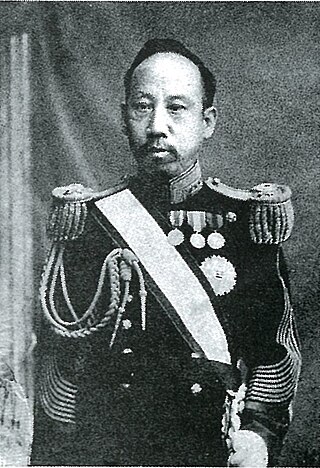
Han Kyu-seol was a prime minister of Korean Empire when the Japan–Korea Treaty of 1905 was signed. Han opposed the treaty, but failed to prevent it from being signed.

The Korean Empire invasion of Manchuria was an invasion of Manchuria by the Korean Empire. The attack began on 11 August 1902, when Gojong of Korea sent Yi Bum-yun to Jiandao as an observer. The attack ended in victory for Korea, which gained some control over Jiandao until the Gando Convention of 1909.

























